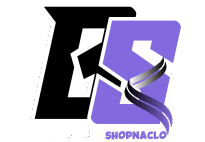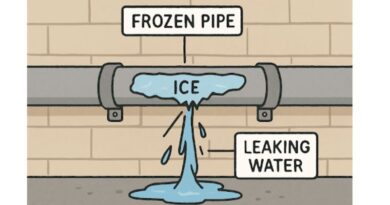Strategies For Safe And Efficient Machinery Relocation
Why Early Planning Matters For Machinery Moves
Success for any complex machinery relocation hinges on seeing several steps ahead. Early planning allows project stakeholders to map out the entire relocation, from the initial site preparations to the final installation. This process entails crafting detailed timelines, arranging specialized transport, booking skilled professionals, and budgeting for every phase. By anticipating bottlenecks, factoring in weather, and clarifying the scope with all parties, project managers can adjust for unexpected changes before they derail progress.
Businesses that handle industrial equipment regularly often use specialized solutions like machinery storage Pittsburgh PA, during critical intervals, such as waiting for permits or completing new facilities. These flexible options enable organizations to avoid costly downtime while ensuring their valuable assets are protected and ready when needed. Moreover, early planning also focuses on pre-move walkthroughs, route mapping, and logistical support for safe, efficient execution. According to occupational safety guidance, comprehensive planning can reduce workplace accidents by making hazards more visible and controllable before heavy lifting ever begins.
Assessing Equipment And Site Conditions
During equipment and site assessment, the groundwork for a smooth machinery move is laid. Each piece of machinery has unique specifications—weight, dimensions, center of gravity, and securing points—that determine the choice of rigging and transport equipment. Meanwhile, the origin and destination environments are thoroughly inspected. Teams measure access widths, check for ceiling and structural constraints, and verify the floor’s capacity to support rolling equipment. Variables such as the proximity of utilities, overhead obstructions, and building entry points are documented in detail.
Real-world moves can uncover surprises: a last-minute construction project might block a loading path, or discrepancies may arise between blueprints and actual site conditions. Early and detailed site surveys capture these issues, allowing crews to adapt rigging plans and minimize costly on-site adjustments. Using findings published in resources like industry safety magazines, teams can refer to best practices and real incidents to refine their checklists. A robust assessment ensures that tools and personnel are prepared for each project phase’s unique challenges.
Prioritizing Safety At Every Stage
Safety must be woven into every decision and action during a machinery relocation. From unbolting the first fixture to lowering equipment into place, a culture of safety protects workers and assets. This means enforcing rigorous lockout/tagout (LOTO) protocols, maintaining machine guards, and issuing relevant personal protective equipment. Injuries can occur quickly when moving heavy parts, particularly during lifting, shifting, or reassembly—times when even slight oversights can have severe consequences.
Industry statistics from the National Safety Council underscore the hazards: improper handling of heavy equipment causes many workplace injuries annually. Frequent safety meetings, job hazard analyses, and hands-on training can dramatically reduce risk. Teams can identify and address dangers before incidents by fostering open channels for reporting concerns and encouraging a proactive safety mindset. This attitude benefits every project member, from managers to machinery operators.
Essential Tools And Technology For Relocation
Technological progress has revolutionized how heavy machinery is moved. Specialized hydraulic dollies and jacks distribute the weight safely, allowing for the transport of massive loads across factory floors or rough terrain with minimal effort. Mobile cranes, custom rigging slings, and self-propelled modular transporters can execute precise, stable movement even in tight or elevated locations, sharply reducing manual handling.
Technology isn’t just about muscle; it’s about intelligence. Precision laser alignment tools help set equipment perfectly level and square after transport, saving time on calibration and rework. Real-time digital inventory systems provide tracking and accountability, so teams always know where valuable assets are located, significantly reducing the risk of loss or theft during the move. As challenges arise—like a sudden equipment malfunction or route change—these technological solutions make adaptation immediate and tailored to the problem. By investing in the right gear and digital systems, companies safeguard their assets and workforce.
Coordinating Teams And Communication
Machinery relocation brings together a diverse group of professionals, and the task’s complexity demands high-level coordination. Electricians, riggers, engineers, transport drivers, supervisors, and sometimes third-party vendors must be aligned regarding timing, equipment placement, and the sequence of tasks. The most effective teams use digital dashboards, real-time communication apps, and centralized documentation to keep everyone on the same page.
Regular project briefings and safety updates provide team members with up-to-the-minute information, while collaborative project management tools allow for seamless sharing of blueprints, schedules, and change orders. Practical experience shows that clear, open communication helps resolve conflicts quickly and prevents time-consuming mistakes. Whether navigating a last-minute route change or reallocating resources due to delays, centralized coordination is key to reducing stress, avoiding confusion, and ensuring smooth project execution from start to finish.
Navigating Rules And Permits
Machinery moves are highly regulated to safeguard workers, communities, and the environment. Projects often require multiple specialized permits—from road use and heavy haul to environmental and noise compliance—before moving equipment leaves its starting point. Teams must conduct due diligence for every location, confirming which permits are required and the timeline for obtaining them.
Overlooking a single piece of required documentation can result in significant delays, legal penalties, or even damage to reputation. As such, successful relocations involve creating a compliance checklist early in planning, assigning accountability, and building slack into project schedules to accommodate regulatory approvals. By treating regulations as integral—not afterthoughts—organizations avoid unnecessary risks and ensure machinery is moved on schedule and in full accordance with the law.
Recent Trends In Machinery Moving
The world of machinery relocation is rapidly changing, shaped by a blend of digital advancements and a growing focus on sustainability. Adopting digital management tools helps project leads track every stage of complex moves, from real-time progress monitoring to digital delivery checklists. Remote-controlled rigging equipment further increases safety, keeping workers from potential pinch points or hazardous conditions—a trend discussed extensively in industry news.
Along with efficiency, environmental considerations also influence industry practices. More companies are turning to eco-friendly packing materials, reusing crates, and consolidating shipments to reduce waste and emissions. This benefits the planet and can enhance a company’s public image. Embracing these trends keeps businesses competitive, demonstrating a capacity to adapt, protect workers, and meet evolving client expectations.
Helpful Resources For Project Success
- Many organizations turn to government safety publications for comprehensive checklists and protocols. These resources ensure projects follow established best practices and comply with current regulations.
- Connecting with peers, industry networks, and specialty consultants can surface creative solutions for unexpected challenges, offering fresh insights built on hands-on experience.
- Flexibility in scheduling and approach, such as maintaining backup crews or alternate transit routes, creates space for the unexpected and prevents minor hiccups from escalating.
- Recent industry case studies and news stories illustrate successful machinery moves, highlight lessons learned, and spotlight emerging strategies to achieve better outcomes.
Organizations stack the odds by incorporating thorough planning, detailed assessment, robust safety, innovative technology, effective team coordination, and regulatory diligence, ensuring safe, smooth, and cost-effective machinery relocation. Staying tuned in to evolving trends and leveraging the wisdom found in industry resources ensures both current success and continuous improvement for future projects.




